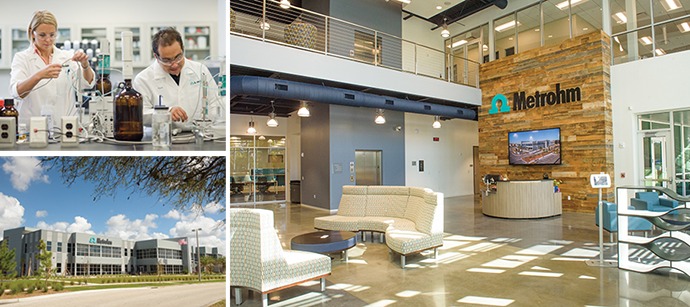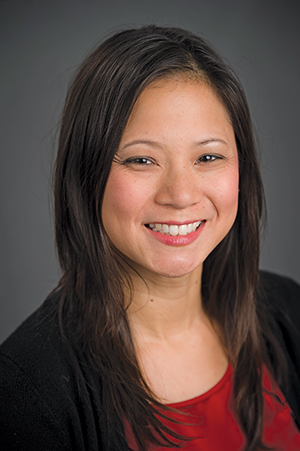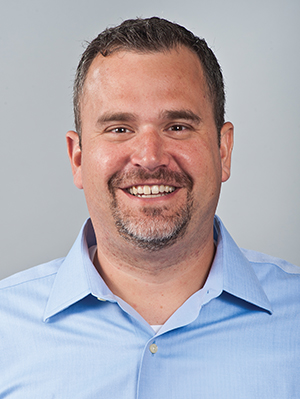“This is everything I thought I didn’t want. Or didn’t need. But I’m here now and it’s everything I need and the only thing I want.”
—Tamara Lush, Hot Shade
How many states in our remarkable union can match the mythology of Florida?
None. Not one. But precious few find a way through the hype and embrace the majesty in the mythology that is the Sunshine State.
Florida is so much more than Disney, retirees and snow birds.
The Urban Dictionary agrees: “Not all Floridians are old, spend time in amusement parks, or live by the beach.”
As someone who’s spent more than a quarter century living in Florida, I can heartily attest to that fact. Sure, you’ll occasionally be trapped in the fast lane behind an Oldsmobile going 20 miles per hour under the speed limit with the left blinker eternally flashing, but you’ll also reap the rewards of existing in a place that’s worth being, and not just a hurried stopover on the way to someplace else.
And most of that time will be spent in sunlight.
The problem with Florida is the widespread misperception of it. We would today call that Fake News. Most people who don’t live there think of it as a state primarily suited for mouse-eared-wearing tourists, cranky geriatrics and beach bums. They too often fail to see the Sunshine State as a welcoming place for business.
Understanding the reality of Florida requires closer inspection and more than a few-days jaunt to South Beach or the Magic Kingdom. To appreciate what Florida offers, you gotta veer off the beaten path.
For the better part of the past 18 months, that’s exactly what I did, traveling to such burgs as Brandon, Plant City, Lakeland, Yulee, Fernandina Beach, Maitland, Gainesville, Micanopy, Clearwater, Bartow, St. Petersburg and Winter Haven.

What I found was a state that defied the myths and surprised me in a lot of ways. It wasn’t the same Florida I grew up in four decades ago. It was so much better.
That’s because the real Florida isn’t found only in the large metropolises of the state — the familiar places like Miami, Orlando, Tampa and Jacksonville. It’s found also in out-of-the-way hamlets like Riverview, Niceville, Frostproof and Sanford. Read on and see why.
From Switzerland with Love
In a place once known more for mining phosphate from the Alafia River, a 75-year-old Swiss company is building a business based on expert chemical analysis. That place is Riverview, in eastern Hillsborough County about 20 minutes from Tampa, and the company is Metrohm USA.
On January 16, Metrohm announced the opening of its new 90,000-sq.-ft. (8,361-sq.-m.) headquarters in Riverview. Ed Colihan, president and CEO of Metrohm USA, says the project consolidates facilities in Long Island, New York, and Houston. “We wanted to relocate the North American headquarters to a location where the cost of doing business was more reasonable and offer our employees an improved quality of life and have better access to the rest of the country and Europe,” he says. “Our people in New York could not even afford to rent an apartment or buy their first house. In Hillsborough County, they could afford to buy homes and live here, plus enjoy the benefits of working with our European partners and suppliers.”
About 100 employees began moving into the facility in January, and a grand opening was held in April. Colihan says the selection of Riverview came after a rigorous site search. “We wanted to be east of Chicago,” he says. “We selected Raleigh-Durham, Atlanta, Jacksonville and Tampa. These cities would meet our needs. As we started to look at prices for leased space and run the numbers for employees, travel, quality of life and affordability, we narrowed it down to Jacksonville and Tampa. They offered us the best costs overall.”

“We have a governor who supports economic development, and we have the toolkit we need to succeed. We’re back in the game now.”
Metrohm chose Tampa in 2008 and reaffirmed that choice last year. “Riverview is just east of Tampa, close to the airport, and convenient to downtown,” Colihan says. “It gives our employees easy access in and out. It’s right on the Interstate 75 and Highway 301 corridor. More housing is going up in this area. I’ve been very impressed with what’s going on here.”
With 41 locations and 2,000 employees worldwide, the Swiss firm is poised to grow more from its new regional headquarters in Florida, adds Colihan. “Globally, we continue to move from leased space agreements to owning our own facilities. It allows us to pick a location that’s best for our customers. And it allows us to design our space the way we need it. As we own in these locales, we set down roots that are even deeper than before.”
A Triumph for Coastal Rebirth
Eight years after the Gulf Coast endured one of the worst man-made disasters in history, the people and businesses of the region are being made whole with the passage of the Triumph Fund legislation.

Many folks have forgotten the fallout from the massive Deepwater Horizon BP oil spill in the Gulf of Mexico on April 20, 2010, but for the residents and business leaders of Northwest Florida, the pain and loss remain vivid. Tourism was devastated, and businesses that relied on Gulf waters for their livelihood, especially fishermen, shrimpers and oyster harvesters, were kicked in their collective guts. As businesses suffered, families suffered.
Nearly a decade later, restitution is coming in the form of $18 billion in damages that BP was forced to pay in a long-contested court settlement. The state gets $3.2 billion, with $2 billion set aside to cover damages. Kim Wilmes, president and CEO of Florida’s Great Northwest, says that 75 percent of these funds will go to eight counties in the region: Bay, Escambia, Franklin, Gulf, Okaloosa, Santa Rose, Wakulla and Walton.
“BP has already paid $400 million to the state in the first installment,” says Wilmes. “From an economic development perspective, this money can be used for workforce development, education programs at every level, and public infrastructure. The bill also created a seven-member board of private-sector business leaders in the region who will decide how those dollars are allocated.”
Wilmes, based in Niceville, says the Triumph Fund has the potential to transform the region. “The $2 billion will be paid over 15 years,” she says. “That’s $400 million this year and then $100 million a year for the next 15 years. With this money, plus the $85 million that Gov. Rick Scott secured for his Job Growth Grant Fund, we’re in even better shape today than we were before the oil spill. We have a governor who supports economic development, and we have the toolkit we need to succeed. We’re back in the game now.”
Growing Steel in Citrus Country
The epitome of rural rebirth may be what’s happening today in Frostproof in a long-overlooked corner of southeastern Polk County. In a place known more for harvesting oranges and grapefruits and producing some of the finest football players in America (ahem), a giant in the steel industry is looking for iron men of another sort.
Nucor Corp. announced March 12 that it intends to build a 256,000-sq.-ft. (23,782-sq.-m.) rebar micro mill in Frostproof, located in the heart of the Central Florida farm belt. The $240-million investment is expected to employ 250 workers and pay an average annual wage of $66,000. The mill on a 400-acre (162-hectare) site on U.S. Highway 27 is projected to have an annual capacity of 350,000 tons. Construction is anticipated to last two years, pending permits and regulatory approvals.

“Our people in New York could not even afford to rent an apartment or buy their first house. In Hillsborough County, they could afford to buy homes and live here, plus enjoy the benefits of working with our European partners and suppliers.”
John Ferriola, chair, CEO and president of Charlotte-based Nucor, said that competition dictated the site choice. “We are building this rebar micro mill in a great and growing market where demand is strong and there is currently an abundant supply of scrap, a good portion of which is handled by our scrap business, the David J. Joseph Company,” he said. “Consistent with our planned strategy of being a low-cost producer, this micro mill will give us a cost advantage over our competitors who are shipping rebar into the region from long distances.”
The announcement came just one week after President Donald Trump announced a 25 percent tariff on imported steel — a decision that makes steel milling in the US more profitable.
Jennifer Taylor, vice president of business development for the Central Florida Development Council, says the lead on the project originated with Enterprise Florida last June. “The company was looking at Florida, South Carolina, Nebraska and Missouri,” she says.
Sean Malott, executive director of the CFDC, based in Lakeland, says that multiple factors drove the search process. “Location is critical for a project like this,” he notes. “Electrical power, natural gas, rail, central location, and access to raw material — namely scrap metal — were pivotal factors. There were many potential sites in both states. It was a moving target. They looked all over Florida, from here to Jacksonville. In the end, the site needed to be on a major rail line, and CSX was a key player.”
A new CSX integrated logistics center is in nearby Winter Haven, although Nucor did not indicate whether the presence of an inland intermodal port played a role.
Duke Energy supplies electricity to the site, says Malott, noting that Nucor required 45 megawatts of electrical power “from day one.”
Danielle Ruiz, senior economic development manager for Duke Energy in New Port Richey, Florida, adds that “the utilities got the lead last June and then it went out to the communities. We knew they would be a heavy power user. Many sites were analyzed across Central Florida. Nucor looked at much of the center of the state.”
Malott adds that “this is a first for Polk County, and it is huge for that portion of the county. It’s a game-changer for them.”
From Flea Market to Upmarket
As my travels and conversations around Florida continued, one description kept coming up repeatedly: game-changer. Whether it was an exaggeration didn’t matter. The people who used that term believe it.
Such was the case with Paul Partyka, partner with NAI Realvest and president of the Partyka Group in Orlando. When he wanted to speak with me about a former flea market site being redeveloped into a high-end, mixed-use community, I was a bit skeptical at first. But then he changed my mind.
Growing up in Central Florida, I had heard stories about the famous Flea World market in Sanford in Seminole County east of Orlando, but I never quite found the need to invest in recycled jean jackets or pictures of people I don’t know. Now a developer with Canadian roots plans to turn the property into a master-planned, mixed-use development that will highlight natural features throughout the new live-work-play community. Located on the heavily traveled U.S. 17-92 thoroughfare at Ronald Reagan Boulevard, the development is being billed as the new Reagan Center.
“Flea World ended its 35-year run in 2016,” Partyka says. “This site is in the center of the county. The courthouse and sheriff’s office are right across the street. About 40,000 cars a day drive right by it. It’s a perfect place for a new community that will have commercial, office, retail, residential and other uses come together around natural features. Almost 2.5 million square feet of buildings will eventually go up on this property. The County Commission has declared this a catalyst project for Seminole County.”
Karim Ismail of Toronto and Seema Kara of Orlando serve as co-CEOs and lead developers of the project, notes Partyka. “This is a pretty good team with major development experience,” he adds. “They plan to build multi-family housing, structured parking, high-density development and high-rise construction on site and tie it in with nature and a lot of open space.”
It helps that 35,000 college students already live or go to class in the area, Partyka says. “Plus, another 8,000 to 9,000 county employees work within walking distance of this location every day. This is literally the center of Seminole County, in more ways than one. It could be the corporate address of choice for firms one day.”
Big dreams. Big plans. Big hopes. It hearkens back to a time when Florida was more a land of promise than of actual progress. But maybe that’s the real beauty of this oft-misunderstood state. The people who choose to live and build businesses here don’t mind the baggage of failed experiments of yesteryear. Instead, they long and work for better days ahead.
From Riverview to Niceville to Frostproof to Sanford, there’s ample evidence of real progress in hopes not just dreamed but fulfilled.

